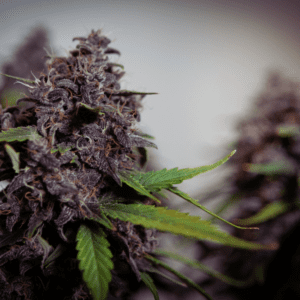Leveraging Cannabis Taxes to Bridge Health Gaps in New York


Harnessing Cannabis Tax Revenue to Address Health Inequities in New York
In 2023, New York’s legal cannabis industry generated nearly $16.3 million in revenue, with expectations of significant growth as more dispensaries open and the market matures. This influx of funds is set to bolster state infrastructure, especially in towns that have opted to allow adult-use dispensaries. The revenue also supports one of the primary goals of the Marijuana Regulation & Taxation Act (MRTA): stimulating New York’s economy. However, there remains a glaring gap in the use of these funds—supporting the MRTA’s other critical goal of reinvesting in communities most harmed by cannabis prohibition.
Addressing the Impact of Cannabis Prohibition
New York’s current approach rightly prioritizes individuals and families who were directly impacted by cannabis-related convictions, offering them greater access to the dispensary application process. But this narrow focus neglects the broader swath of communities, particularly Black and brown neighborhoods, that have been devastated by the long history of discriminatory drug policies.
To truly rectify the injustices of cannabis prohibition, New York must look beyond individual opportunities and direct cannabis tax revenue into programs that specifically benefit the communities most affected by these racist policies.
Learning from Other States
New York has a chance to lead by example, or at the very least, follow in the footsteps of other states that have committed to reinvesting cannabis tax revenue into marginalized communities. Minnesota, for instance, has pledged $15 million to the communities most harmed by cannabis prohibition, a model that New York could replicate.
In Evanston, Illinois, the city implemented a “real estate transfer tax designated for reparations,” using revenue from its dispensaries to support those impacted by slavery and institutional racism. This approach directly addresses both economic and racial inequities, setting a precedent for how cannabis revenue can be used to heal historic wounds.
Bridging the Racial Wealth and Health Gaps
Reinvesting cannabis tax revenue into communities that bore the brunt of prohibition won’t just help close the racial wealth gap; it can also narrow the racial health gap. According to researchers Basset and Galea, evidence supports reparations or community reinvestment as a public health priority that can significantly impact racial health disparities.
In New York, this could translate into funding for affordable housing, which has already been linked to better health outcomes. Other proposed investments include mental health services, such as mobile psychiatric crisis units, which would deliver much-needed support to underserved areas. These units, staffed by individuals with lived experiences, represent a long-term investment in public health, targeting some of the most chronically underfunded sectors.
Alternatively, cannabis revenue could be directed towards increasing Medicaid reimbursement rates, improving care for low-income patients, or bolstering safety net hospitals that predominantly serve Black and brown communities.
Intentional Reinvestment is Key
Cannabis tax revenue has the potential to become a crucial financial support stream for New York. However, to fully align with the MRTA’s goals, the state must adopt a targeted reinvestment strategy. Simply distributing funds evenly would fail to address the systemic inequities that the legislation aims to remedy.
As New York’s elected officials allocate the first rounds of cannabis tax revenue, prioritizing investments that reduce both the racial wealth and health gaps should be paramount. By doing so, New York can set a new standard in the fight against health inequities, ensuring that cannabis legalization benefits those who have been disproportionately harmed by its criminalization.











